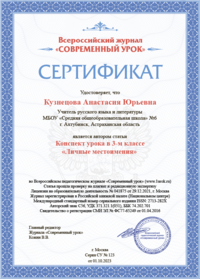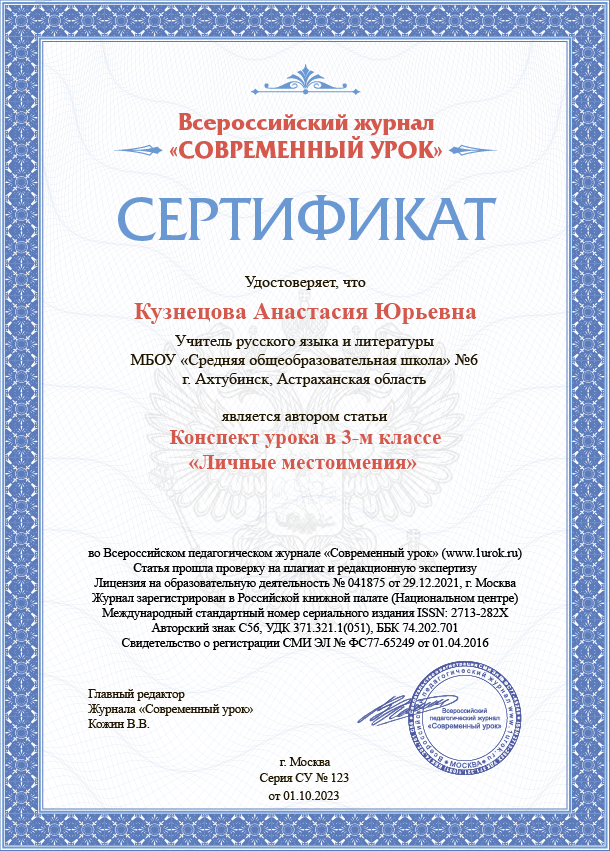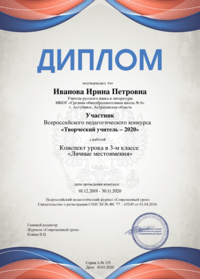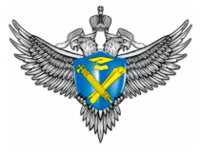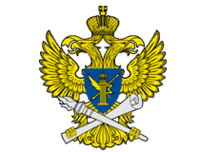Методическая разработка урока английского языка «There is, there are — «Здесь есть» для 3 класса
Автор: Каунева Юлия Анатольевна
Организация: МАОУ СОШ №21 им. Д.А. Наливалкина
Населенный пункт: Московская область, г. Балашиха
Методическая разработка урока английского языка "There is, there are — "Здесь есть" для 3 класса
Тема урока: "There is, there are — "Здесь есть" Предмет: английский язык Класс: начальная школа 3 класс (уровень A1) Продолжительность: 45 минут Автор: Каунева Юлия Анатольевна
Образовательные результаты:
- Students will be able to recognize and use "there is" and "there are" correctly. (Ученики смогут распознавать и правильно использовать конструкции "there is" и "there are" в речи.)
- Students will be able to ask and answer questions about the presence of objects in a location. (Учащиеся научатся задавать и отвечать на вопросы о наличии объектов в определенном месте.)
- Students will develop confidence in their ability to describe scenes and pictures using the target language. (Учащиеся разовьют уверенность в своей способности описывать сцены и картинки, используя изучаемый язык.)
Цели урока:
- To introduce the concept of "there is" and "there are" for expressing the existence of singular and plural objects. (Познакомить с конструкциями "there is" и "there are" для выражения нахождения объектов в единственном и множественном числе в определенном месте.)
- To practice the correct usage of "there is" and "there are" in affirmative, negative, and question forms. (Практиковать правильное использование конструкций "there is" и "there are" в утвердительной, отрицательной и вопросительной формах.)
- To enhance speaking skills through interactive activities. (Улучшить навыки устной речи через интерактивные задания.)
Методический замысел урока:
Engaging students in a variety of activities that cater to different learning styles (visual, auditory, kinesthetic) to ensure understanding and correct usage of "there is/there are". (Вовлечение учащихся в разнообразные занятия, ориентированные на разные стили обучения (визуальный, аудиторный, кинестетический), чтобы обеспечить понимание и правильное использование "there is/there are". )
Необходимое оборудование:
- Laptop (ноутбук)
- Video projector (проектор)
- Video projection screen (экран)
- Board (доска)
- Pictures of various rooms (изображения различных комнат)
- Worksheets for practice activity (рабочие листы для практической части урока)
- Props and drawing materials for the production activity (материалы для рисования для продуктивной части урока)
- Poster with a tree and leaves of different colors for the reflection stage (плакат с изображением дерева и разноцветных листьев для этапа рефлексии)
План урока:
|
Этап |
Описание этапа |
Тайминг |
|
Lead-in Вступление |
- Warm-up: https://foxford.ru/trainings/24129 Do an interactive vocabulary test with the whole class to revise the vocabulary needed for the lesson and establish the context. Разминка: https://foxford. ru/trainings/24129 Проведите интерактивный тест по словарному запасу со всем классом, чтобы повторить необходимую лексику для урока и создать контекст. - State the lesson's objective and introduce "there is" and "there are" as ways to describe the presence of objects. Сформулируйте цель урока и введите конструкции "there is" и "there are" как способы описания присутствия объектов. |
5 min |
|
Presentation Представлениее и презентация языкового материала |
- Use visual aids (flashcards, pictures) to present "there is" and "there are". Write sentences on the board and emp hasize the difference in usage. Engage students by asking them to repeat after you. Используйте наглядные пособия (карточки, картинки) для демонстрации конструкций "there is" и "there are". Запишите предложения на доске и подчеркните разницу в использовании. Вовлеките учащихся, попросив их повторять за вами. Board Plan + There’s + a / an … (sofa/chair/…). - There isn’t + a / an … (sofa/chair/…). ? Is there + a / an … (sofa/chair/…)? + There are + two / three / four … (curtains/chairs/…). - There aren’t + two / three / four … (curtains/chairs/…). ? Are there + two / three / four … (curtains/chairs/…)? |
7 min |
|
- Explain the difference between singular and plural nouns and match them with "there is" for singular and "there are" for plural. Highlight the structure of sentences using a whiteboard or projector. Объясните разницу между единственным и множественным числом существительных и соотнесите их с "there is" для единственного числа и "there are" для множественного. Выделите структуру предложений, используя маркерную доску или проектор. Form Meaning Pronunciation With singular nouns, we use there’s + a / an … there isn’t + a / an … There’s a rug. / There isn’t a mirror. We use there is and there are when we first refer to the existence or presence of someone or something. There is and there’s [ðeəz] (contraction of there is) are both singular forms. We use there’s more commonly in informal speaking. With plural nouns, we use There are + number … There aren’t + number … There are three windows. / There aren’t four windows. |
||
|
Practice Контролируема я отработка необходимой языковой формы |
- Controlled Practice: Distribute worksheets with fill-in-the-blank sentences. Students will complete sentences using "there is" or "there are". 1. Fill in There is or There are. ___________________ a computer on the table. ___________________ two lamps in the living room. ________________ four chairs in the living room. ____________________ five pictur es on the walls. ____________________ a bed in the bedroom. 2. Fill in There isn’t or There aren’t. ___________________ a lamp on the table. ___________________ three rugs in the living room. ____________________ a picture on the wall. ________________ two sofas in the living room. ____________________ a mirror in the bedroom. 3. Fill in Is there..? or Are there..? ___________________ two curtains in the living room? ___________________ a shelf in the living room? ________________ two armchairs in the bedroom? ____________________ a mirror in the bathroom? ____________________ a picture on the wall?
- Interactive Practice (to provide less controlled practice) : Hand out worksheets with pictures. In pairs, students describe a picture to their partner using "there is" and "there are" in affirmative and negative forms. The partner guesses which picture is being described. The pictures are taken from the internet. 8 min
|
15 min 7 min |
|
Физкультминутк а |
https://yandex.ru/video/preview/11599906423514255088
|
2 min |
|
Production Продуктивная фаза (или этап "продукция") |
(to provide freer oral practice in a communication activity)для предоставления более свободной устной практики в коммуникативной деятельности - Group Activity (Групповая активность): Divide the class into small groups. Each group creates a short story or scene description using "there is" and "there are" in affirmative and negative forms. They can use props or draw illustrations to support their story. Разделите класс на небольшие группы. Каждая группа создает короткий рассказ или описание сцены, используя "there is" и "there are" в утвердительной и отри цательной формах. Они могут использовать реквизит или нарисовать иллюстрации для поддержки своего рассказа. - Presentation (Презентация): Each group presents their story or description to the class. Каждая группа представляет свой рассказ или описание всему классу. |
10 min 5 min 5 min |
|
Conclusion (Error Correction/ Feedback) Заключение (Исправление ошибок / Обратная связь) |
1. Review the lesson by asking individual students to make sentences with "there is/there are." Повторите урок, попросив отдельных учеников составить предложения с "there is/there are". 2. Correct any mistakes gently and provide positive feedback: Осторожно исправьте любые ошибки и предоставьте положительную обратную связь: - Teacher gives delayed ‘cold’ correction on errors including pronunciation errors; Учитель использует отложенное исправление ошибок (этот способ исправления используется после высказывания), включая ошибки произношения; - Teacher provides praise to students on good language use. Учитель поощряет учеников за правильное использование языка. |
5 min |
|
Reflection: “Success tree” Teacher hangs a tree on the board. Students go to the board and decorate the tree with the appropriate colors. Each leaf has its own specific color: green - done everything correctly, yellow - difficulties encountered, red - many mistakes. Рефлексия: “Дерево успеха” Учитель вешает дерево на доску. Ученики подходят к доске и украшают дерево соответствующими цветами. Каждый лист имеет свой определенный цвет: зеленый - все сделано правильно, желтый - возникли трудности, красный - много ошибок. |
||
|
Homework Домашнее задание |
Read the information in the student’s book https://foxford.ru/wiki/angliyskiy-yazyk/there-is-are-primary "There is, there are — "Здесь есть" to revise the rule and describe your bedroom or your favorite place using "there is" and "there are" in affirmative and negative forms. Прочитайте информацию в учебнике для учащихся https://foxford. ru/wiki/angliyskiy-yazyk/there-is-are-primary "There is, there are — "Здесь есть", чтобы повторить правило и описать свою спальню или любимое место, используя "there is" и "there are" в утвердительной и отрицательной формах. |
1 min |


